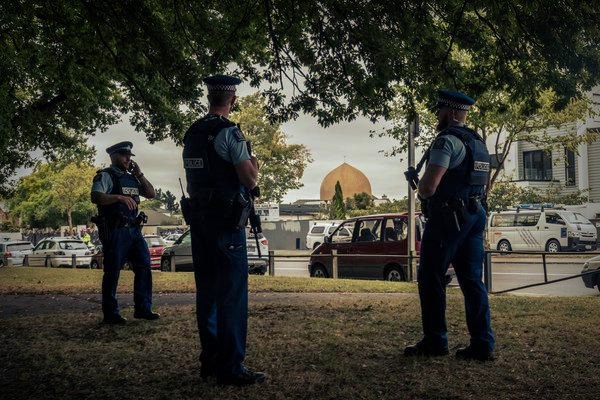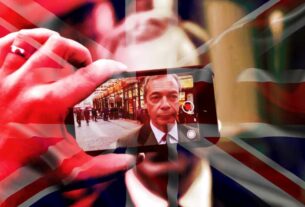Challenging this terrorist attack requires us to primarily challenge the broader discourse that has enabled the legal discrimination of Muslims
By Farid Hafez
Farid Hafez is senior researcher at the Department of Political Science, University of Salzburg and senior researcher for The Bridge Initiative at Georgetown University.
SALZBURG
The white supremacist terrorist could have chosen various other places and objects to carry out his attack. But he chose a place of Islamic worship. Why? Let’s just recall Anders Behring Breivik, who killed 77 young people at a Socialist Youth camp in Utoya/Norway. He deliberately chose this place, seeing the young generation of open-minded and liberal social democrats as the enablers of the Islamization of Europe. Breivik, who, in the manifesto of the terrorist, is referred to as “Knight Justiciar Breivik” from whom he had taken “true inspiration”, could have served as a blueprint for another terrorist attack. But he chose a mosque. But why?
The question might sound simple at first. But we should take some time to reflect on this aspect of terrorism. This is not so much about what the mosque stands for Muslims — since this does not matter to the white supremacist — as about how the mosque has become a metaphor for the evil projections we find in Islamophobic ideology.
In fact, in the imaginary of anti-Muslim ideologues, there is a very limited number of materials that have been considered as the “symbols” of Islam; symbols that have been turned into issues of political contestation. In the discourse on Islam, the most prominent materials have undoubtedly been the hijab (the headscarf worn by Muslim women) and the mosque. One can observe how, first, these objects have been reframed. Just as the hijab today is imagined as the symbol of “female subjugation” in a patriarchal Muslim society, the mosque is imagined as the place of radicalization, where Muslims are taught to hate people of other religions or are seen as mere localities where terrorist plots are hatched.
It is the reframing of the meaning of these materials that has in many places caused Muslims to lose their freedoms. While freedom of religion has been central to most Western countries since the end of the World War II, this right has been questioned in various ways for Muslims since the 1990s. And with the rise of radical right-wing parties since the 2000s, it has been put into legislation. Institutionalized Islamophobia has become normalized today. Muslim women are not allowed to wear the hijab; in some places this limitation is for pupils, in other places it is for teachers, and in still others it is in several public services. Additionally, the mosque has become a contested issue, ranging from the notorious minaret ban in Switzerland to lesser known bans on, for example, the construction of mosques and minarets in two Austrian counties. And let us not forget the debate around the so-called Ground Zero Mosque in New York or other debates that arose around the construction of a number of mosques that finally saw completion in Cologne or the Istanbul district of Taksim.
Remember, how frustrated U.S. Muslims were because Barack Obama, the so-called president of “hope”, was not able to visit a mosque, thus yielding to the atmosphere of fear triggered by the radical anti-Muslim rhetoric spread by people such as Pamela Geller alongside the Tea Party members. The mosque was no longer the symbol of empowerment, as remembered by so many African-Americans, but had instead been turned into an object of fear. This has left its marks.
On the other hand, on anti-Muslim terrorists. The list of targeted mosques where people were shot starts from London’s Finsbury Park Mosque to the Christchurch Mosque in New Zealand. While the mass shooting in New Zealand has been the deadliest in recent history, mosques have long been targeted, from the police raids in France to the attacks in Germany. Only in 2017, police responded to nearly 1,000 attacks on mosques in the Federal Republic, meaning that every third day, a mosque was targeted. A website has been mapping hate crimes and attacks on mosques since 2015.
No wonder, then, that the mosque played a central role in the manifesto that the white supremacist terrorist had posted before the attack. “We will destroy every mosque and minaret in the city of Constantinople,” he said, referring to the former name of Istanbul when it was under Christian rule. He deliberately chose the Christchurch mosque because, for him, it “had far more invaders” and represented “an optically foreign building” and had links to “extremism”. The mosque for him stands for various kinds of otherness; extremism, foreignness, supremacy (through acquiring property). It is this crisis of whiteness that the terrorist addressed, which is projected on one of the most visible markers of Muslim life.
Thus, challenging this terrorist attack requires us to primarily challenge the broader discourse that has enabled the legal discrimination of Muslims as well as paves the way for their annihilation, as we have seen in the most recent massacre.
* Opinions expressed in this article are the author’s own and do not necessarily reflect the editorial policy of Media Revive Network.





